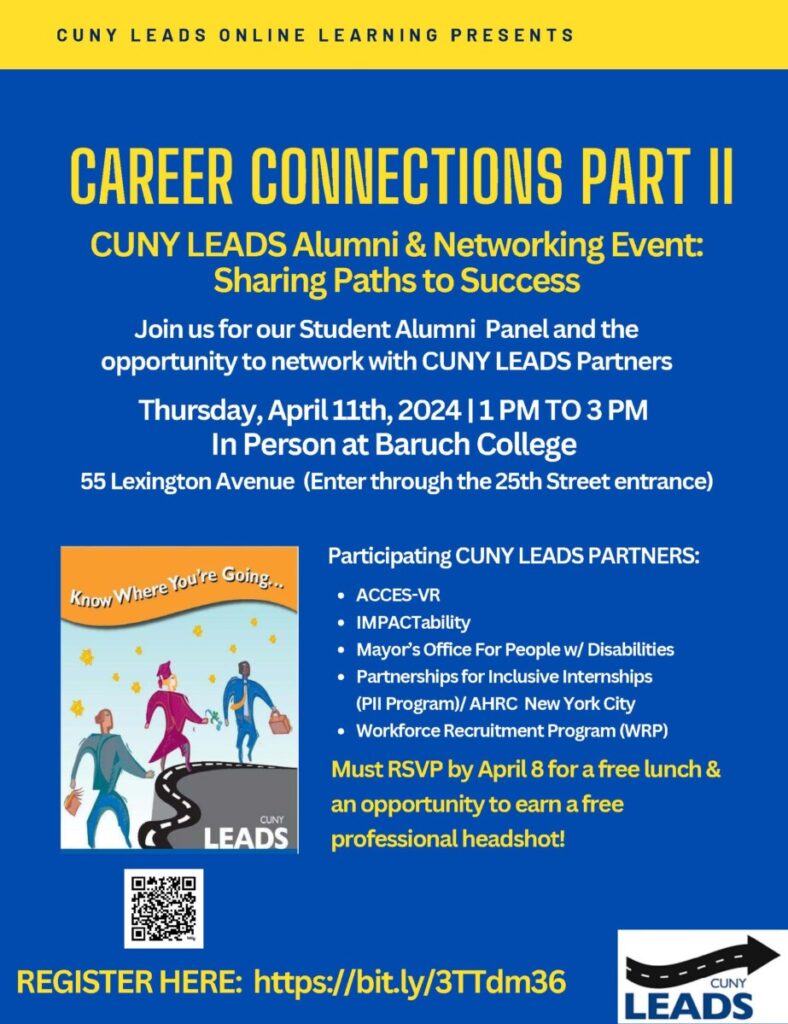What was the project?
In addition, one of the projects I have become a part of during the internship period is the creation of a flyer to advertise a coming event of the CUNY LEADS program. This project stood out as it was focused on contributing to raising the consciousness and active participation in a student-disabilities program to guide the students in their educational and professional pursuits skillfully. My job was to make a flyer that was aesthetic and helpful and promote the event’s spirit, making everyone want to join in. The backbone of this process is the strategic components of the layout plan, the type of graphics to be used, and the strategy to communicate event details.
How many people did you work with, and how did you communicate with them?
For the exciting project that I have undertaken, my most active connection was with my mentor. Our team was small, just my colleague and I, so professional communication was professional, direct, and prompt. We onsite made communication fast and efficient and readily shared our feedback and ideas, which changed over time. For that reason, this personal communication mode was so valuable since it warranted that we tuned in our views on the project and eventually got rid of any misconceptions. It also helped us work effectively and fluently.
What was successful about it?
The success of the flyer design for the CUNY LEADS event lies in several key aspects: the color selections, the format, and the kind of layout you must choose from. The manager is keen on following the established design principles for the old flyers, such as a style for an identifiable brand identity. Nevertheless, I introduced slight modifications to complete this coursework to achieve my goals as a designer; I included subtle changes in color schemes and additional information that is key for this event. The new look gained their acceptance and brought up a similar yet refreshed appearance to the previous one, yet everything would remain the professional image of the program; what was done was only adding some new ideas.
What wasn’t?
The multiple-step process provided the chance of the most significant difficulty- finding the suitable image, which will simultaneously be the focal part of the design and simultaneously fit in with the proposed message and the target audience. Picture selection was more challenging than anticipated, as not only a single aesthetic and color was considered but also one that could evoke the relevant emotions and convey the pertinent information about the event. These requirements together required significant time and effort to be expended because the image should capture the inclusivity and empowerment themes closely linked to the CUNY LEADS module.



